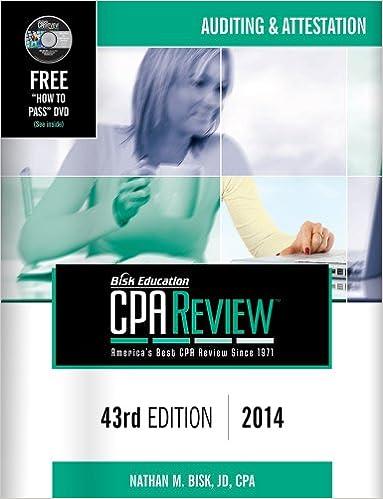# of units Cost per Available for Required information (The following information applies to the questions displayed below.) Laker Company reported the following January purchases and sales data for its only product Date Activities Units Acquired at Cost Units sold at Retail Jan. 1 Beginning inventory 240 units@ $16.50 - $ 3,960 Jan. 10 Sales 190 units@ $25.50 Jan. 20 Purchase 170 units@ $15.50 = 2, 635 Jan. 25 Sales 190 units @ $25.50 Jan. 30 Purchase 300 units@ $15.00 = 5, 700 Totals 790 units $12, 295 380 units Required: The Company uses a periodic inventory system. For specific identification, ending inventory consists of 410 units, where 380 are from the January 30 purchase, 5 are from the January 20 purchase, and 25 are from beginning inventory. Determine the cost assigned to ending inventory and to cost of goods sold using (a) specific identification. (6) weighted average, (a FIFO, and (c) LIFO. Complete this question by entering your answers in the tabs below. Specific Id Weighted FIFO LIFO Average Determine the cost assigned to ending inventory and to cost of goods sold using specific identification. For specific identification, ending inventory 410 units, where 380 are from the January 30 purchase, 5 are from the January 20 purchase, and 25 are from beginning inventory. a) Specific Identification Cost of Goods Available for Sale Cost of Goods Sold Ending Inventory Cost of Goods Hof units # of units Cost per Cost of Cost Ending unit sold in ending unit Goods Sold Sale per unit Inventory inventory Beginning inventory Purchases TH Required: The Company uses a periodic inventory system. For specific identification, ending inventory consists of 410 units, where 380 ar- the January 30 purchase, 5 are from the January 20 purchase, and 25 are from beginning inventory. Determine the cost assign ending inventory and to cost of goods sold using (a) specific identification. (6) weighted average. (FIFO, and (d) LIFO. Complete this question by entering your answers in the tabs below. Specific Id Weighted Average FIFO LIFO Determine the cost assigned to ending inventory and to cost of goods sold using specific identification. For specific identification, endir 410 units, where 380 are from the January 30 purchase, 5 are from the January 20 purchase, and 25 are from beginning inventory. a) Specific Identification Cost of Goods Sold Cost of Goods Available for Sale Cost of Goods of units Available for unit Sale Cost per of units Cost per sold unit Cost of Goods Sold Ending Inventory # of units Cost in ending Ending inventory per unit Inventory + Beginning inventory Purchases Jan. 20 Jan. 30 Total Specific Id Weighted Average > The Company uses a periodic inventory system. For specific identification, ending inventory consists of 410 units, where 380 a the January 30 purchase, 5 are from the January 20 purchase, and 25 are from beginning inventory. Determine the cost assig ending inventory and to cost of goods sold using (a) specific identification, (b) weighted average, (a FIFO, and (0) LIFO. Complete this question by entering your answers in the tabs below. Specific la Weighted Average FIFO LIFO Determine the cost assigned to ending Inventory and to cost of goods sold using weighted average. (Round cost per unit to 2 decimal b) Weighted Average Cost of Goods Available for Sale Average Cost of Goods # of units Cost per Available for unit Sale Cost of Goods Sold Average # of units Cost of Cost per sold Goods Sold Unit Ending Inventory # of units Average Ending in ending Inventory inventory unit Cost per Beginning inventory Purchases Jan. 20 Jan. 30 Total 0 $ 0 Complete this question by entering your answers in the tabs below. Specific Id Weighted Average FIFO LIFO Determine the cost assigned to ending Inventory and to cost of goods sold using FIFO. c) FIFO Cost of Goods Sold Cost of Goods Available for Sale Cost Cost of Goods #ol units per unit Available for Sale W of units Cost per sold unit Cost of Goods Sold Ending Inventory N of units Cost Ending in ending inventory per unit Inventory Beginning inventory Purchases Jan. 20 Jan. 30 Total 0 $ 0 the January 30 purchase, 5 are from the January 20 purchase, and 25 are from beginning inventory. Determine the cost assig ending inventory and to cost of goods sold using (a) specific identification, (b) weighted average, (d) FIFO, and ( LIFO. Complete this question by entering your answers in the tabs below. Specific Id Weighted Average FIFO LIFO Determine the cost assigned to ending Inventory and to cost of goods sold using LIFO. d) LIFO Cost of Goods Sold Cost of Goods Available for Sale Cost of Goods # of units Available for unit Sale Cost per W of units Cost per sold unit Cost of Goods Sold Ending Inventory # of units Cost in ending Ending per unit Inventory inventory Beginning inventory Purchases: Jan. 20 Jan. 30 Total 0 $ 0 (FIFO LIFO











